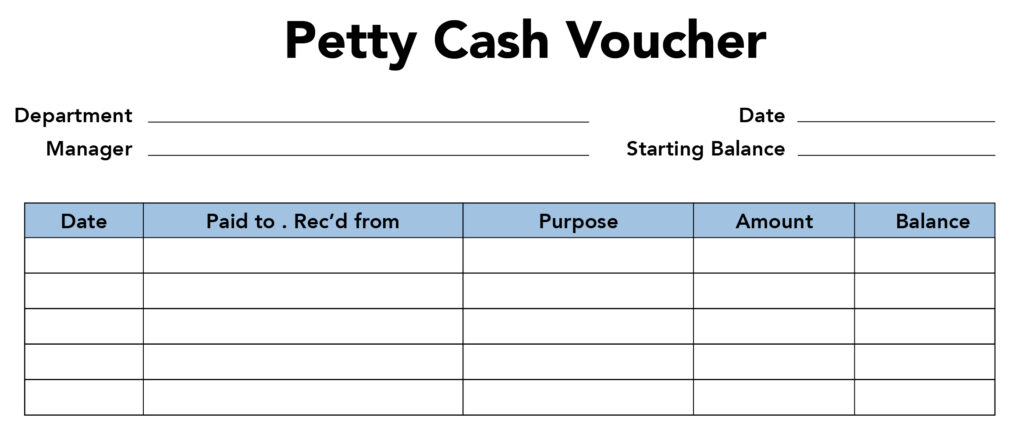- Explain the voucher system
At times, every business finds it convenient to have small amounts of cash available for immediate payment of items such as delivery charges, postage stamps, taxi fares, dinner money for employees working overtime, and other small items. To permit these cash disbursements and still maintain adequate control over cash, companies frequently establish a petty cash fund of a round figure such as $100 or $500. The petty cash account is a current asset and will have a normal debit balance.
Usually, one individual, called the petty cash custodian or cashier, is responsible for the control of the petty cash fund and documenting the disbursements made from the fund. By assigning the responsibility for the fund to one individual (or position), the company establishes a baseline amount of internal control over the cash in the fund. Since petty cash isn’t normally a material amount of money, petty cash is accounted for in the most expedient way possible, just like supplies are. Some companies won’t have stringent internal controls over petty cash, but looking at the best theoretical control system will be a good exercise in applying internal controls to any asset account.
The petty cash fund should be large enough to make disbursements for a reasonable period, such as a month. The company treasurer or CFO establishes the petty cash fund by writing a check, usually payable to “cash”. After the check is cashed, the petty cash custodian places the money in a small box that can be locked. The fund is now ready to be disbursed as needed.
One of the conveniences of the petty cash fund is that payments from the fund require no journal entries at the time of payment. Thus, using a petty cash fund avoids the need for making many entries for small amounts. The bookkeeping staff makes one compound journal entry when the fund is replenished (usually at the end of each month).
When disbursing cash from the fund, the petty cash custodian updates a petty cash voucher, which should be signed by the person receiving the funds. A petty cash voucher is a document or form that shows the amount of and reason for a petty cash disbursement.

The custodian staples any source documents (usually a receipt) to the petty cash voucher (some petty cash vouchers are printed on envelopes to hold the receipts). At all times, the employee responsible for petty cash is accountable for having the cash and the petty cash vouchers equal to the total amount of the fund. For instance, if the fund is maintained at $100, and the controller wanted to do a mini-audit during the middle of the month, looking in the box, she would find (theoretically) a few receipts that total, say, $92.60 along with $7.40 in cash and change.
The petty cash fund is replenished at the end of the accounting period, or sooner if it becomes low.
In the next section, we’ll run through a series of petty cash transactions, establishing petty cash, disbursing it, replenishing it, changing the amount of cash, and finally, closing a petty cash account.